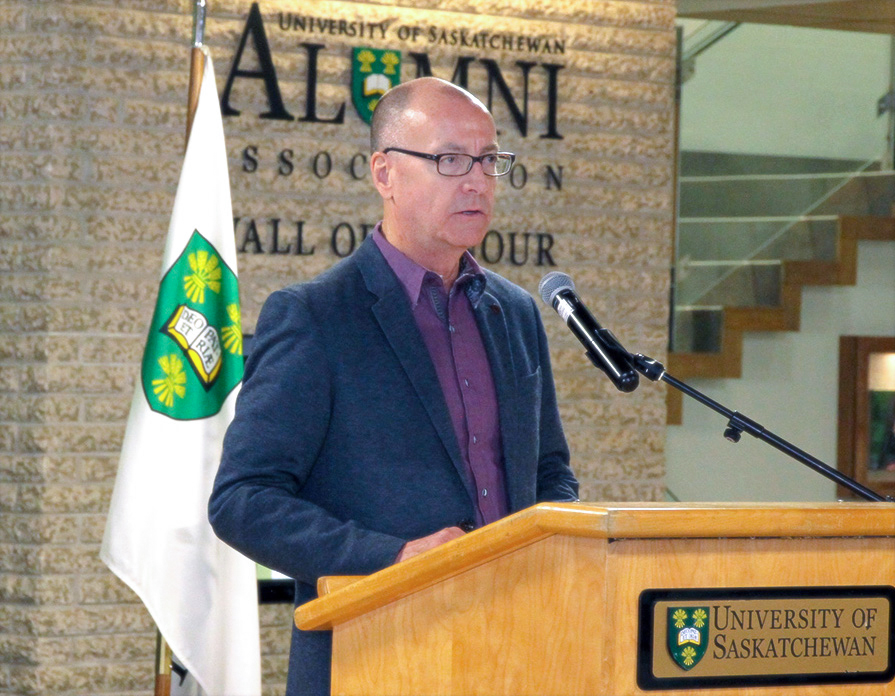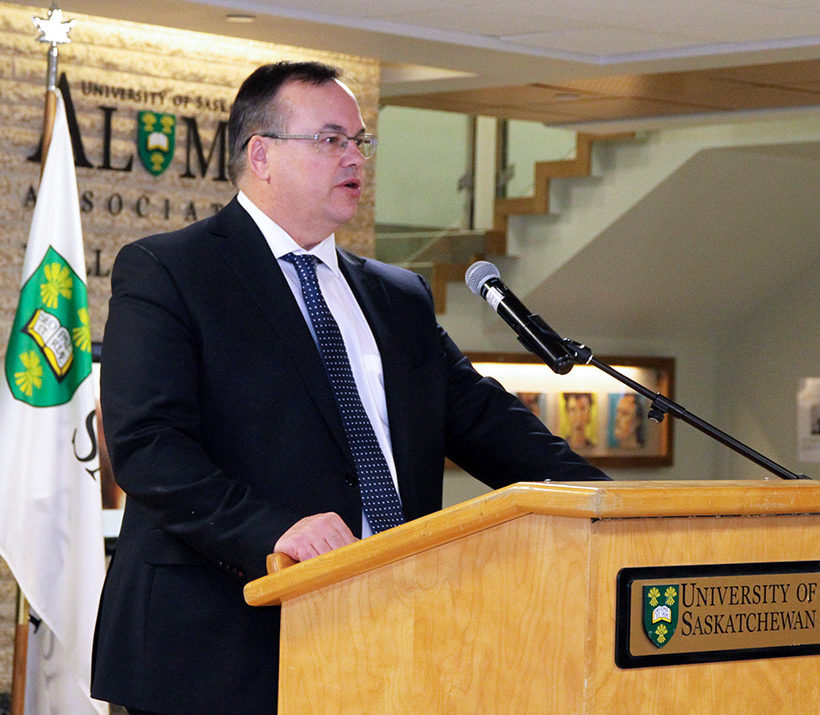USask takes steps to reduce carbon footprint
In buildings all across campus, the front line in the battle against climate change will soon be fought behind walls, in ventilation systems, and in dark basement utility rooms.
By James ShewagaAfter years of grappling with greenhouse gas emissions, the University of Saskatchewan has unveiled a new $3.48-million plan of attack to improve energy efficiency and reduce its carbon footprint.
“Most of this takes place in mechanical rooms, on roofs and behind false ceilings, so not in very visible places,” said Bill Hale, manager of Facilities Sustainability and Engineering at USask. “But this is the subtlety of climate change that provides a metaphor for the nature of this work. You don’t really see or feel the greenhouse gas emissions that are the basis of climate change. However, we can measure our greenhouse gas emissions, set targets to reduce them, and then act on those commitments.”

Armed with $1.5-million in support from the federal government’s Low Carbon Economy Fund announced on March 13, the university will target improvements in 26 buildings on campus to be completed by March 31, 2022, designed to reduce the university’s carbon footprint while saving money.
“This project is designed to reduce greenhouse gas emissions (carbon dioxide equivalent) by more than four thousand metric tonnes per year by 2030, which will result in close to $650,000 in annual energy savings,” said Greg Fowler, vice-president of Finances and Resources at USask.
“Our campus is firmly committed to the principle of sustainability, a key pillar of the foundation of our new university plan to be The University the World Needs. We are determined to do our part to decrease greenhouse gas emissions, to reduce our carbon footprint, and to be more sustainable.”
Hale said the university plans to fix, replace or eliminate equipment and systems that are out-dated and inefficient, in order to maximize energy efficiency efforts.

“An excellent way for USask to reduce its energy consumption is to make sure our heating and cooling equipment is operating efficiently,” he said. “We will do this by correcting out-of-specification equipment, turning fans off when they are not needed, installing variable speed drives to slow down fans, and installing energy recovery equipment. We will do an initial retro-commissioning to identify the most economical projects to implement improvements to.”
Fowler said this new program is the latest step in the university’s commitment to sustainability, after USask received a silver Sustainability Tracking, Assessment and Ratings System ranking in 2017, three years ahead of its original target date of 2020.
“We have lots to be proud of when it comes to sustainability, but we also know there is always more to do,” said Fowler, noting that the university is also proposing to build a $30-million co-generation plant (combined heat and power plant) designed to significantly reduce carbon emissions by generating steam and electricity from natural gas. “So, support we receive from programs like the Low Carbon Economy Fund makes a huge difference.”
This project is funded in part by the Government of Canada’s Low Carbon Economy Fund.

